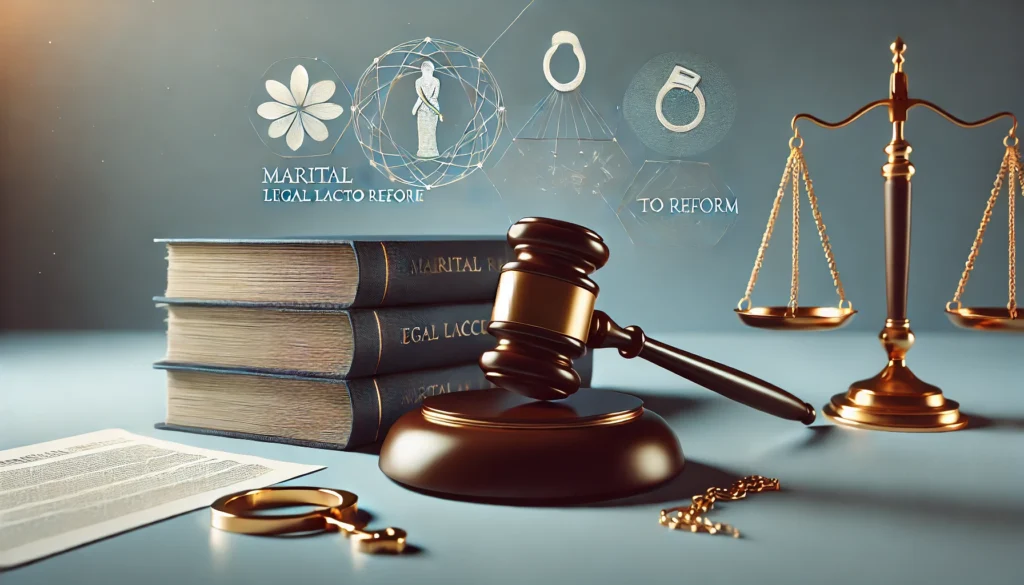Published on 30th May 2025
Authored By: Reshmi Khan
Heritage Law College
ABSTRACT
An agreement in a criminal case between the prosecutor and the defendant is known as a plea bargain. Looking deeper into it, if we break down this term “Plea Bargaining” into parts, “Plea” & “Bargain”, it starts making more sense, as we know “Plea” means “Request” & “Bargain” means “Negotiation”. In simple words, it’s a legal mechanism where a person accused crime agrees to plead guilty to reduce the offense in return for a more lenient sentence, thereby accelerating the process of the Judiciary. It was enacted in India via the Criminal Law (Amendments) Act, 2005[1]. Its objective is to point out the challenges raised by the overwhelming backlog of cases in the Indian judiciary.
Here I am writing this paper to explore the scope of plea bargaining in India and highlight its legal framework, benefits, along with the challenges it faces during the practice. It also examines similar practices in other legal systems to provide a detailed understanding of the effectiveness of plea bargaining.
Through a critical analysis of enacted law, judicial decisions, and scholarly opinions, this paper suggests reforms that can enhance their fairness and efficiency of plea bargaining in India.
KEYWORDS: Plea Bargaining, Criminal Justice System, India, Legal Reforms, Judicial Efficiency, Criminal Procedure Code (CrPC) and Legal Ethics.
INTRODUCTION
The Indian criminal justice system always faces the challenge of delay in the dispensation of justice, primarily due to the heavy burden of pending cases. This not only slows down the legal process but also affects the fundamental right of individuals to get timely justice. To tackle this issue, the concept of plea bargaining was introduced under the Criminal Law (Amendment) Act, 2005. This reform was designed to speed up the resolution of criminal cases and help reduce the burden on an already overburdened judiciary.
Plea bargaining is a legal practice that is very common such as in the US, UK, and Canada. It allows an accused person to plead guilty to get a lesser charge or punishment in exchange for a reduced sentence. This system helps in faster disposal of cases, reducing the time victims have to wait for justice. However, when the concept was introduced in India, it created a mix of hope and concern. While many saw it as a solution to the problem of backlog of cases, others were concerned about its impact on the right to a fair trial, the possibility of abuse, and whether it could harm the principles of justice that our legal system stands for.
This paper aims to explore the concept of plea bargaining in India, considering its legal framework, the history behind its introduction, and the legislative process that brought it into existence. It also examines how the judiciary, particularly the Supreme Court, has viewed plea bargaining in terms of constitutionality and legality. In addition, the paper delves deeply into the perspectives of various stakeholders – defendants, prosecutors, and judges – and discusses the system’s benefits, challenges, and criticisms. Through this analysis, this paper aims to provide a clear and comprehensive understanding of plea bargaining and its role in shaping the future of criminal justice reforms in India.
REVIEW OF LITERATURE
- The Historical Development in the Indian: Plea bargaining, as it is rooted in common law systems in the countries like the U.S. and UK, by the Criminal Law (Amendment) Act, 2005, it was established in India to address the increasing backlog of criminal cases. Its adoption was recommended by the Law Commission of India, aiming to lessen the delays while maintaining fairness. The concept faced initial doubts relating to its potential misuse, particularly about the right to a fair trial.
- Theoretical Perspectives: Assistive Views: Scholars like Stephen J. Schulhofer[2] argue that plea bargaining brings improvement in judicial efficiency, minimizes case backlogs, and also saves resources.
Critical Views: Legal experts like Madhav Khosla [3]raise concerns about the pressure, injustices, and the weakening of due process, especially for the individuals who are vulnerable accused.
- Comparative Analysis: In the US plea bargaining method is used in over 90% of cases to get resolved, with judicial oversight that is strict but also raises concerns about coercion and justice quality.
UK: focuses on the monitoring of the judiciary and restoring justice, making sure that plea deals are voluntary and fair.
India: The evolution of this plea bargaining system is still happening by passing time, with famous cases like State of Maharashtra v. Indian Medical Association (2002)[4] and K.K. Verma v. Union of India (2010)[5] shaping its framework legally.
- Judicial Opinions in India: The Supreme Court has focused on the need for methodological safeguards to prevent misuse. In K.K. Verma (2010), the Court stressed that plea bargaining must be voluntary, with the accused fully aware of the consequences.
SCOPE OF PLEA BARGAINING IN INDIA
- Legal Framework: Sections 265A to 265L of the CrPC govern the Plea bargaining, which was introduced in 2005. The cases with a maximum punishment of less than seven years are applicable for this, but also it excludes serious offenses like rape and terrorism.
- Judicial Role and Safeguards: The courts make sure that plea deals are voluntary, including informed consent from the accused person. The victim has the right to be heard and considered, and sentencing cannot surpass the maximum prescribed for the offense.
- Plea Bargaining Process: The magistrate is who reviews the case filed by the accused person. If acceptable, the court enables prosecution and defense to negotiate, ensuring fairness before giving the verdict.
BENEFITS OF PLEA BARGAINING
- Judicial Efficiency: Backlog of cases in courts is reduced by Plea bargaining, which lets the judges focus on more serious offenses and complex cases. Because of this, the resolution of cases is done faster and it also reduces holds in the criminal justice system.
- Cost-Effectiveness: For both the state and the accused, the Legal proceedings are expensive. Plea bargaining makes the legal costs decrease by cutting off the need for lengthy trials, which leads to financial benefits for both parties.
- Victim’s Relief: For victims, plea bargaining offers a quicker resolution without the trauma of prolonged cross-examinations and court proceedings. It makes sure that justice is delivered perfectly, providing emotional closure to the case.
CHALLENGES IN PLEA BARGAINING
In India, Plea bargaining faces several challenges like risks of manipulation, inconsistent implementation, and compromised justice quality. It may create public doubts, victim participation gets limited, and result in sentencing disparities. Also, there’s potential for misuse by prosecutors prioritizing quick convictions over fairness, especially when evidence is weak. These issues raise concerns about the integrity of the criminal justice system.
RESEARCH METHODOLOGY
This study uses a legal research approach, focusing on the analysis and interpretation of laws, legal principles, and regulations, focusing on the analysis of statutory provisions, judicial precedents, and academic literature. The research involves:
- Legal Analysis: The relevant provisions are examined under the Criminal Procedure Code (CrPC), particularly Sections 265A to 265L.[6]
- Judicial Review: The landmark judgments that have crafted the practice of “Plea Bargaining” in India.
- Comparative Study: In this, comparisons are drawn with legal systems in the US, the UK, and other jurisdictions to underline the best practices.
- Qualitative Analysis: The scholarly articles, legal commentaries, and reports from legal bodies are reviewed to understand different viewpoints on plea bargaining.
SUGGESTIONS FOR REFORMS
- Criminal Procedure Code (CrPC) needs updates to strengthen the Legal Provisions to make plea bargaining more effective and fair, perfect and clear guidelines should be included to define when plea bargaining is appropriate, and also to prevent the misuse of it a stronger safeguards should be used. Also, the introduction of judicial review should be mandatory in all plea bargaining cases. Judges should thoroughly make sure that the accused person understands the deal and is not being pressured in any way.
- During plea bargaining, the Judicial Training and Awareness Judges play a major role in supporting justice. So, they should get specialized training that focuses on ethical aspects, the risks of pressure, and maintaining fairness. Besides judges, lawyers, prosecutors, and defense counsels should attend regular workshops and training sessions to be up to date on best practices and the ethical responsibilities linked to plea bargaining.
- Public Awareness Campaigns: A lot of people still don’t understand what plea bargaining is and how it works. Campaigns of Public awareness about Plea Bargaining can help remove misconceptions, reduce stigma, and let them know how plea bargaining can be a way for speedy justice. Legal literacy programs, especially for communities which are vulnerable communities, it is also mandatory to ensure that every person who is accused knows their rights and the risks involved.
- Establishing a Plea Bargaining Commission: To ensure fairness and keep the plea bargaining transparent, the establishment of an independent Plea Bargaining Commission could be done. This sector would look into how plea bargaining is implemented nationwide, misuse of plea bargaining complaints should be investigated, and make it sure that courts are following correct procedures.
- Enhanced Legal Aid for the Accused: Many accused individuals, mainly from a background with a weaker economy, may not have access to good legal representation. To mitigate the impact of this on their plea bargaining decisions, the right to legal counsel should be reinforced. Although encouragement of pro bono legal services should be implemented, allowing lawyers to offer free legal aid to the needy once.
CASE STUDIES AND COMPARATIVE ANALYSIS
- Plea Bargaining in India: Early Developments and Judicial Analysis
Plea bargaining was brought up in India through the Criminal Law (Amendment) Act, 2005, to lessen the pending cases and speed up the process of the judiciary. As it focused on simplifying the burden on courts and it also boosted concerns about fairness. In State of Maharashtra v. Indian Medical Association in the year 2002, the Supreme Court pointed out the need for safeguards for the protection of the rights of the accused person. Later, in K.K. Verma v. Union of India in the year 2010, The court emphasized that plea deals must be made willingly and without coercion, meaning that defendants must agree to them freely and without being forced or pressured, with the accused aware fully about the consequences, making sure that the justice isn’t compromised for efficiency.
- Plea Bargaining in High-Profile Indian Cases
One of the remarkable cases is the Mumbai Bombings case of 2008[7], where several accused persons accepted plea deals, receiving reduced sentences. This sparked debates and raised questions about whether justice was truly served, especially for serious crimes. It brought up questions about balancing speedy solutions with public expectations for accountability.
- Challenges and Opportunities in India’s Plea Bargaining System
Although it has potential, plea bargaining faces challenges in India like uneven execution across states, the public and legal professionals having a lack of awareness about it, and concerns about pressure. But, with good guidelines, perfect judicial training, and enhanced awareness, plea bargaining can become an effective tool to deliver swift and fair justice.
CONCLUSION
Plea bargaining has proven to be a valuable change in the Indian criminal justice system, helping in reducing the backlogs of cases, speeding up the trials, and lowering the legal costs. It allows an accused person who has been accused of a crime to admit guilt for a lighter sentence, to ensure faster resolutions, and to lower the pressure on the judiciary. Not only does the Plea Bargaining benefit the efficiency of the system, but it also provides emotional closure to victims without dealing with the trauma of prolonged trials.
Although concerns remain about the potential of the pressure, especially among fragile groups without proper legal support. To ensure fairness, stronger legal safeguards, judicial oversight, and greater awareness are needed. With these reforms, plea bargaining can become a tool that balances efficiency with justice, serving both the accused and society effectively.
REFERENCES
[1] Criminal Law (Amendment) Act, 2005, No. 2, Acts of Parliament, 2005 (India).
[2] 16 Stephen J. Schulhofer, Plea Bargaining and Its Alternatives in the United States: A Comparative Study, Int’l Crim. L. Rev. 109, 111 (2016).
[3] Madhav Khosla, Indian Plea Bargaining: Efficiency vs. Justice, 5 Indian L. J. 55, 58 (2018).
[4] State of Maharashtra v. Indian Medical Association, (2002) 5 SCC 44, 49.
[5] K.K. Verma v. Union of India, (2010) 4 SCC 70, 75.
[6] Criminal Procedure Code, §§ 265A- 265L, No. 2, Acts of Parliament, 1973 (India).
[7] State of Maharashtra v. Ajmal Kasab, (2019) 9 SCC 1.




